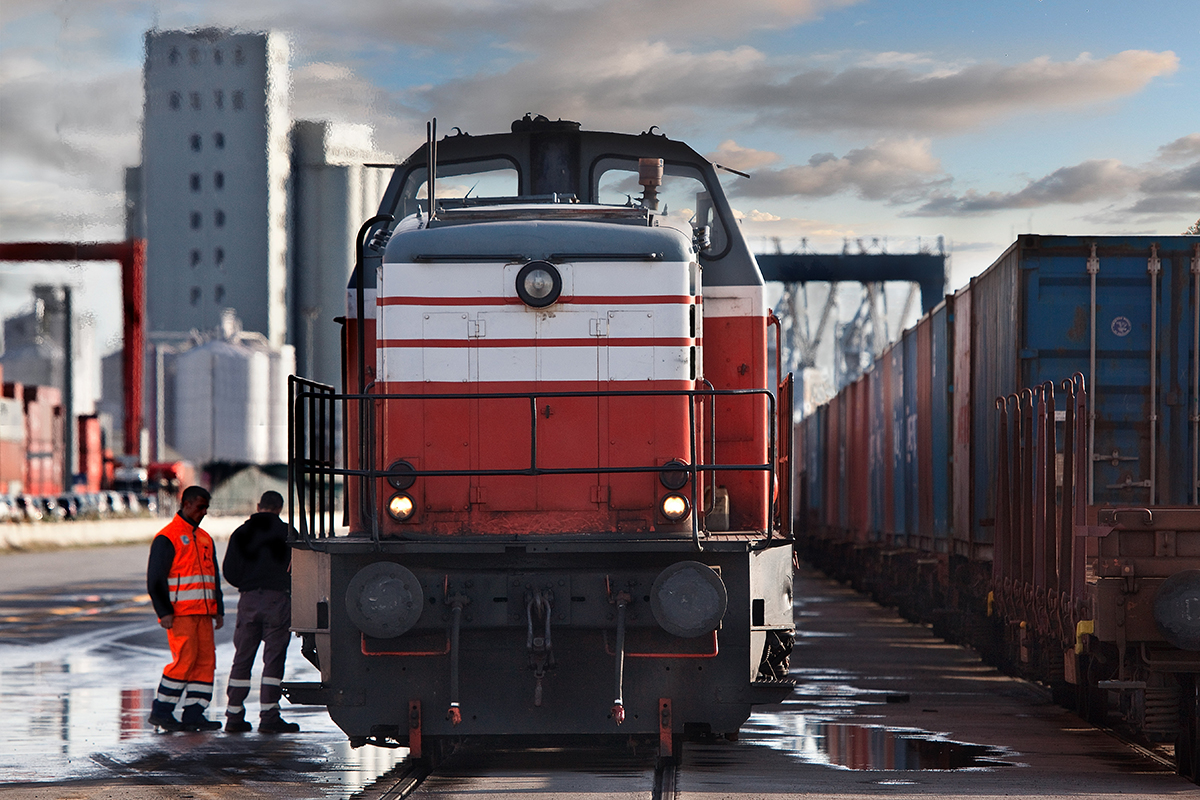There has been a significant boom in rail traffic in the port of Livorno. It closed 2022 with a 35.8% increase in the total number of terminal trains, with 2,817 trains and 47,412 wagons.
This is what emerges from the analysis of data on rail shunting activity in the port prepared by the North Tyrrhenian Port Network Authority’s study & statistics office.
There were 3468 trains in the area, an annual increase of 30.4%, and 54,217 wagons (+ 22.6%).
The analysis by commodity type gives an equally comforting picture. On the container traffic front, there were 2,430 trains entering and leaving Vespucci freight village and the Lorenzini and TDT terminals, 39% more than in 2021.
At the freight village alone, 262 trains were handled, a percentage increase of 31.7% over the previous year.
The rail transport mode now accounts for over 18.7% of the total demand for container traffic in the port. In 2021 the rail quota was around 17.2% of the total.
As for forest products: 257 trains arrived and departed from their terminals (Marterneri and Cilp), an increase of 16% over 2021. The rail share of this traffic reached 10.3% of the total.
In terms of new cars, 152 trains passed through the terminals in 2022, an increase of 130% year-on-year. The rail transport mode now represents 2.8% of the total traffic handled by the port.
As far as bulk and, in particular, grain traffic are concerned, the rail transport mode was not particularly popular last year. Only 10 trains arrived at and departed from the port during the year, 77% less compared to 2021.
Finally, as regards liquid bulk, in 2022 Costiero Gas, Eni and Neri Depositi Costieri recorded 531 trains arriving and departing from their terminals, 31 more than the previous year. The rail quota for this traffic reached 3.9% of the total.
At Piombino, on the other hand, the crisis affecting its industrial cluster and its historical factories, Jsw Steel Italy and Liberty Magona, negatively conditioned the port’s performance . In the year just ended, 345 trains were handled, 35.4% less than in 2021. 4,693 wagons, 56.1% less on an annual basis.
“The 2022 statistics referring to rail traffic show a port network operating at two different speeds. While Livorno continues to grow, Piombino is clearly struggling due to the difficult situation its steel sector is in,” said Port Network Authority president Luciano Guerrieri.
“In 2023 we will redouble our efforts to further encourage transferring goods that are currently only being transported by road,” he added, recalling how last December the feasibility study and preliminary project for reorganizing and upgrading the railway infrastructure in the ports of Livorno and Piombino were delivered to the Authority.
A total of 70 million euros will be invested, a portion of which will be allocated, in Livorno, to the construction of a new railway terminal at the cruise terminal and the modernization of tracks in two crucial parts of the port: the forest products area and the motorways of the sea and multipurpose traffic area.
In Piombino, on the other hand, it is planned to build a new junction to connect the existing port/retroport operational areas and the new quays to the national railway infrastructure, and to build new tracks, where possible at module 750, to serve the new quays.
Fundamental, at network level, is the railway connection between Vespucci freight village and the port of Livorno. Work on the overpass, which began in 2022, will be completed in 2024. In the meantime, work will continue on the construction of the link between Vespucci freight village and the Pisa-Collesalvetti-Vada line. This project, worth EUR 160 million euros, is fully covered by the RFI-MIMS 2022-2026 programme contract. The procedural/environmental process is expected to be completed this year.
“This administration has never neglected the strategic importance of intermodality. Our target is to make our port network even more efficient, thanks to improving rail links and an even more advanced infrastructure.” Mr. Guerrieri concluded.
Translation by Giles Foster

